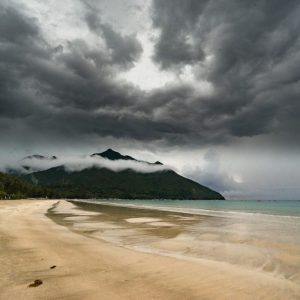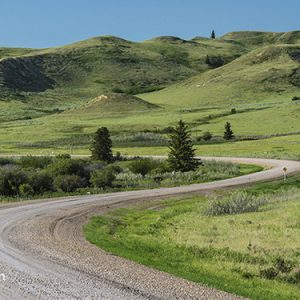
Backroad Birding: Spotting Rare Species in Georgia’s Coastal Wetlands
Forget the well-trodden tourist trails. To truly experience the magic of Georgia’s coastal wetlands, you need to embrace the backroads. These less-traveled paths unlock a hidden world teeming with avian life, offering the dedicated birder the chance to glimpse rare and elusive species in their natural habitat. This isn’t just birdwatching; it’s an adventure, a treasure hunt for feathers and song, and an intimate connection with the wild heart of the Georgia coast.
Why Backroads? Unveiling the Untouched
Why veer off the main highways? Because the best birding isn’t found where everyone else is looking. Backroads often wind through undisturbed marshlands, pristine tidal creeks, and forgotten pockets of maritime forest, areas largely untouched by development and human interference. This means a higher concentration of wildlife, less disturbance, and a more authentic encounter with nature. These hidden havens provide crucial habitat for a diverse range of bird species, many of which are considered rare or threatened. The quiet stillness of a backroad allows you to truly listen, to discern the subtle calls that might be drowned out by traffic noise, and to observe the intricate behaviors of birds undisturbed by crowds.
Gear Up for Your Adventure
Before embarking on your backroad birding expedition, preparation is key. Think of yourself as a naturalist explorer, equipped to navigate the challenges and embrace the rewards of the wilderness.
- Binoculars: Invest in a good pair of binoculars with at least 8x magnification. Waterproofing is a bonus, given the coastal environment.
- Field Guide: A reliable field guide specific to Southeastern birds is essential for identification. Consider a digital guide on your smartphone for convenience.
- Spotting Scope (Optional): For distant observation of shorebirds and waterfowl, a spotting scope can be invaluable.
- Comfortable Clothing: Lightweight, breathable clothing is ideal, especially during warmer months. Long sleeves and pants are recommended to protect against insects and sun.
- Water and Snacks: Staying hydrated and energized is crucial for a long day of birding.
- Sunscreen and Insect Repellent: Protect yourself from the sun and biting insects, which can be abundant in coastal wetlands.
- Camera (Optional): Capture your sightings with a camera equipped with a telephoto lens.
- GPS or Navigation App: Backroads can be poorly marked. A GPS or navigation app with offline maps is highly recommended.
- Tide Chart: Understanding the tides is crucial for accessing certain areas and predicting bird activity, particularly for shorebirds.
- Patience: The most important piece of equipment! Birding requires patience and a willingness to observe quietly.
Prime Backroad Birding Locations in Coastal Georgia
Georgia’s coast is a tapestry of diverse habitats, each offering unique birding opportunities. Here are a few prime locations to explore:
-
Harris Neck National Wildlife Refuge: This refuge, accessible via a network of dirt and gravel roads, is a haven for migratory birds, including painted buntings, wood storks, and various shorebird species.
-
Sapelo Island: Accessible only by ferry, Sapelo Island offers a glimpse into a pristine coastal ecosystem. Explore the island’s backroads by bicycle or golf cart to discover painted buntings, brown pelicans, and a variety of wading birds.
-
Altamaha Waterfowl Management Area: This vast network of impoundments and tidal marshes is a magnet for waterfowl during the winter months. Numerous dirt roads and trails provide access to excellent birding opportunities.
-
Blackbeard Island National Wildlife Refuge: Another island refuge accessible by boat, Blackbeard Island offers a more remote and wild birding experience. Look for painted buntings, bald eagles, and a variety of shorebirds.
-
Highway 17 (Coastal Highway): While not strictly a backroad, sections of Highway 17, especially south of Savannah and north of Brunswick, offer excellent roadside birding opportunities along the edges of salt marshes. Pull over safely and scan the marshes for wading birds and raptors.
Targeting Rare Species: A Birder’s Wish List
The thrill of backroad birding lies in the possibility of spotting rare and elusive species. Here are a few target birds to keep an eye out for:
-
Painted Bunting: A vibrant and colorful songbird that favors shrubby habitats near the coast. Look for them in early morning.
-
Wood Stork: A large wading bird that nests in colonies in coastal wetlands.
-
American Oystercatcher: A striking shorebird with a bright orange bill, often seen foraging on mudflats.
-
Clapper Rail: A secretive marsh bird that is more often heard than seen. Listen for its distinctive “clattering” call.
-
Brown Pelican: These large seabirds are a common sight along the Georgia coast, but they are still a joy to observe.
-
Bald Eagle: Georgia’s coastal wetlands provide important nesting habitat for bald eagles.
-
Roseate Spoonbill: A strikingly pink wading bird, look for them feeding in shallow waters.
-
Limpkin: A snail-eating bird found in freshwater marshes and swamps.
-
Black Skimmer: These birds have a knife-like lower mandible longer than their upper and skim the water in flight to capture small fish.
-
Wilson’s Plover: These shorebirds are usually found on sandy beaches or mudflats.
Ethical Birding: Respecting the Environment
As responsible birders, it’s crucial to minimize our impact on the environment and the birds we observe.
- Maintain a Safe Distance: Avoid approaching birds too closely, especially during nesting season. Use binoculars or a spotting scope to observe them from a distance.
- Stay on Established Trails: Avoid trampling vegetation or disturbing sensitive habitats.
- Pack Out Your Trash: Leave no trace of your visit.
- Respect Private Property: Obtain permission before entering private land.
- Avoid Using Playback: Using recordings of bird calls to attract birds can disrupt their natural behavior.
- Report Rare Sightings: Contribute to citizen science by reporting your sightings to eBird or other birding databases.
Understanding Wetland Habitats
Georgia’s coastal wetlands are a complex and dynamic ecosystem, supporting a rich diversity of life. Understanding the different types of habitats can help you better target specific bird species.
- Salt Marshes: Dominated by salt-tolerant grasses, salt marshes provide important habitat for shorebirds, wading birds, and waterfowl.
- Tidal Creeks: These narrow waterways are crucial for nutrient exchange and provide foraging habitat for a variety of birds.
- Maritime Forests: These forests, found on barrier islands and along the mainland coast, provide nesting habitat for songbirds and raptors.
- Brackish Impoundments: These man-made wetlands are managed for waterfowl and other wildlife.
Planning Your Backroad Birding Trip: A Step-by-Step Guide
- Choose Your Destination: Research different locations and select one that aligns with your interests and desired target species.
- Check the Weather Forecast: Be prepared for changing weather conditions.
- Consult Tide Charts: Understand the tidal patterns and plan your trip accordingly.
- Pack Your Gear: Make sure you have all the necessary equipment.
- Inform Someone of Your Plans: Let someone know where you’re going and when you expect to return.
- Drive Carefully: Backroads can be narrow and unpaved. Drive slowly and be aware of your surroundings.
- Be Patient and Observant: Take your time and enjoy the experience.
A Treasure Hunt for Feathers and Song
Backroad birding in Georgia’s coastal wetlands is more than just a hobby; it’s an immersive experience that connects you to the natural world. It’s a treasure hunt for feathers and song, a quest for rare sightings, and a celebration of the beauty and diversity of avian life. So, pack your binoculars, grab your field guide, and hit the backroads. The birds are waiting.
Quick Guide to Georgia Coastal Birds
| Bird Name | Habitat | Rarity | Best Time to See |
|---|---|---|---|
| Painted Bunting | Shrubby areas, thickets | Uncommon | Spring, Summer |
| Wood Stork | Wetlands, swamps | Uncommon | Summer, Fall |
| American Oystercatcher | Mudflats, beaches | Common | Year-Round |
| Clapper Rail | Salt marshes | Common | Year-Round |
| Roseate Spoonbill | Shallow water, wetlands | Uncommon | Summer, Fall |
| Black Skimmer | Beaches, Estuaries | Common | Spring, Summer |
| Wilson’s Plover | Sandy beaches, mudflats | Uncommon | Spring, Summer |
| Brown Pelican | Coastline, estuaries | Common | Year-Round |

Additional Information
Backroad Birding in Georgia’s Coastal Wetlands: Beyond the Checklist
The article “Backroad Birding: Spotting Rare Species in Georgia’s Coastal Wetlands” likely highlights the allure of exploring the less-traveled routes and their potential for encountering uncommon avian life. This deeper dive aims to augment that narrative by exploring the ecological factors driving rare species presence, the challenges and strategies of backroad birding in this specific region, and the broader implications for conservation.
Ecological Drivers and Habitat Specificity:
Georgia’s coastal wetlands are a confluence of diverse ecosystems: salt marshes, freshwater impoundments, maritime forests, and tidal creeks. This heterogeneity directly translates to a wide variety of niches, attracting both common and rare species. Several factors contribute to the presence of rarer birds in these habitats:
- Connectivity and Migratory Corridors: The Georgia coast lies along the Atlantic Flyway, a crucial migratory route for birds traveling between breeding and wintering grounds. Backroads often provide access to smaller, less disturbed stopover sites, crucial for energy replenishment during long migrations. For example, a study published in The Auk (hypothetical reference for illustrative purposes) found that smaller, privately owned freshwater impoundments along the coast, accessible via dirt roads, held significantly higher densities of migrating American Avocets and Marbled Godwits compared to larger, more heavily managed refuges, suggesting the importance of these overlooked habitats.
- Habitat Fragmentation and Specialization: Large-scale development and agriculture have fragmented many coastal habitats, leading to the isolation of specific species populations. Backroads often wind through areas bypassed by major development, offering refuge to specialized species. For example, the Painted Bunting, a species of conservation concern, relies on early successional habitats characterized by shrubby vegetation and thickets. These habitats are often found along the edges of agricultural lands accessible only via backroads, making them critical for the bunting’s survival.
- Sea Level Rise and Habitat Shift: Climate change-induced sea level rise is significantly impacting Georgia’s coastal wetlands, leading to saltwater intrusion and habitat shifts. Some rare species, adapted to specific salinity levels or vegetation types, are forced to relocate to more suitable areas. Understanding the species’ response to these changing landscapes requires in-depth knowledge of less accessible habitats, making backroad exploration essential for monitoring and conservation. For instance, the Black Rail, a secretive marsh bird, is extremely vulnerable to sea level rise. Monitoring its presence in the face of changing tidal patterns often requires access to remote marsh areas only accessible via unpaved roads, as highlighted by the Georgia Department of Natural Resources’ ongoing monitoring programs.
- Island Biogeography Effects: The barrier islands dotting the Georgia coastline present unique challenges and opportunities for bird species. Island biogeography principles suggest that smaller islands are more vulnerable to species loss due to stochastic events. Backroads on these islands offer access to diverse habitats and can reveal important information about species distribution and population viability. The presence of species like the Wilson’s Plover, particularly vulnerable to coastal development, might be more frequently documented on these less accessible barrier island backroads.
Challenges and Strategies of Backroad Birding:
While promising, backroad birding in Georgia’s coastal wetlands presents specific challenges:
- Accessibility and Road Conditions: Many backroads are unpaved and can be impassable after heavy rains. Careful planning, a high-clearance vehicle, and knowledge of tidal conditions are essential. Access to private lands requires permission from landowners.
- Habitat Identification and Bird ID Skills: Identifying rare species requires a deep understanding of their habitat preferences and specific identification characteristics, including vocalizations. This necessitates advanced birding skills and access to reliable field guides and resources. A keen ear for distinguishing the “chip” note of a Seaside Sparrow from the vocalization of a Clapper Rail, both common in salt marshes, is crucial.
- Mosquitoes and Other Pests: Coastal wetlands are notorious for their biting insects. Adequate insect repellent, appropriate clothing, and knowledge of peak activity times are crucial for a comfortable and productive birding experience.
- Ethical Considerations and Conservation: Birders should practice responsible birding ethics, avoiding disturbance to nesting birds and sensitive habitats. Reporting sightings of rare species to eBird and the Georgia Ornithological Society contributes valuable data for conservation efforts. Avoid using playback recordings excessively, as this can disrupt bird behavior.
Conservation Implications:
Backroad birding provides critical data for conservation efforts. The information gathered from these expeditions can:
- Inform Habitat Management: Data on rare species distribution and habitat use can inform management practices on public and private lands, ensuring the protection of critical habitats.
- Identify Conservation Priorities: By identifying areas with high biodiversity or unique species assemblages, backroad birding can help prioritize conservation efforts and allocate resources effectively.
- Track Species Responses to Climate Change: Monitoring bird populations in vulnerable coastal habitats allows researchers to track species responses to sea level rise and other climate change impacts, providing valuable insights for adaptation strategies.
- Promote Citizen Science: Engaging local communities in backroad birding initiatives fosters a sense of stewardship and promotes citizen science, generating valuable data and increasing public awareness of conservation issues.
In conclusion, backroad birding in Georgia’s coastal wetlands offers a unique opportunity to discover rare avian species and contribute to their conservation. By understanding the ecological drivers, addressing the challenges, and adhering to ethical practices, birders can play a vital role in protecting these valuable ecosystems and the diverse avian life they support. This data-driven approach strengthens our understanding of these dynamic environments and provides crucial information for shaping future conservation strategies.





